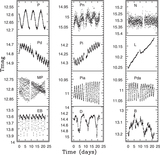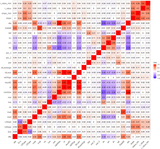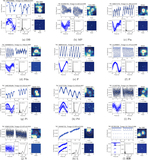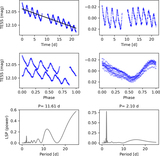Image Details
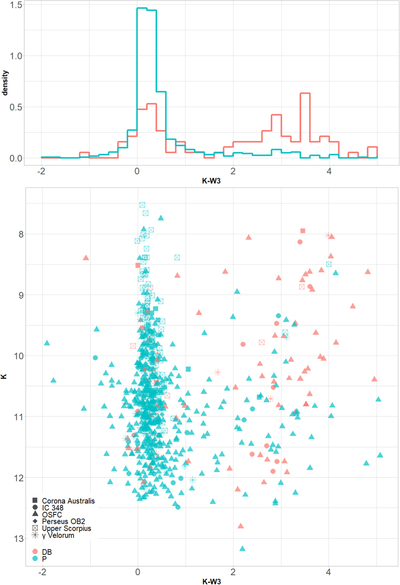
Caption: Figure 7.
Distribution of 706 candidates to P or DB classes proposed by the algorithm. In the upper panel we have a density histogram of the color of both classes giving an estimation of their probability densities. In the bottom panel we show a color–magnitude diagram using K and W3 bands obtained from the AllWISE catalog (Cutri et al. 2021), and selected to have a profile-fit flux signal-to-noise ratio over 2, and discarding those with possible contamination or bias due to proximity to an image artifact. The number of members in each star-forming region is distributed as follows: 457 stars in OSFC, 112 in Upper Scorpius, 60 in γ Velorum, 49 in IC 348, 19 in Corona Australis, and nine in Perseus OB2. The color–magnitude diagram shows that the behavior of the infrared excess of both classes occurs among all regions we studied.
Copyright and Terms & Conditions
© 2023. The Author(s). Published by the American Astronomical Society.



